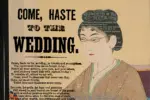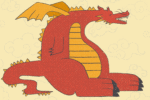Sexism and stereotypes of women have always existed and can be especially seen in literature. However, representations of women are different in different books. This article will detail good and bad representations of women, focusing on the books “Of Mice and Men” by John Steinbeck and “The Bell Jar ” by Sylvia Plath. Typically, female characters are portrayed as more human when written by women than when men write them. Mostly, men use their female characters as a stepping stone for their male characters’ journey. This pattern is especially seen in the two books that will be focused on. These books have their similarities, such as they are both American literature and that they were both written around the same time, within 30 years of each other.
However, they also contain many differences.
“Of Mice and Men” Synopsis
The novel “Of Mice and Men” by John Steinbeck follows the journey of the characters George Milton and Lennie Small. They spend their time traveling together, looking for work. Soon, they go to a farm and look for work there. Here, new characters are introduced, including Curley and Curley’s wife. Curley’s wife is the only female character that Steinbeck introduces in the book. Throughout the book, Lennie has a habit of accidentally killing small creatures, like mice, because he squeezes them too hard. His habit soon proves detrimental, when one day he asks for permission to feel Curley’s wife’s hair to see how soft it is. He pets her too hard, and she screams, and he grabs harder to silence her, accidentally breaking her neck. Many people come after Lennie, so George takes him and runs away. At the end of the novel, George kills Lennie to spare him from the more painful death the angry mob would have given him.
“The Bell Jar” Synopsis
Sylvia Plath’s “The Bell Jar” details the life of the main character, Esther Greenwood, and how her worsening mental health affects her life. The novel begins with describing her time in New York City doing an internship as an editor for a magazine, along with 11 other girls. During her time in New York City, a few possible love interests enter the story: Lenny Shepherd, Constantin, and Marco. None of the interactions with them turned into a relationship of any kind, with the worst one, Marco, attempting to assault Esther. When Esther returns home from New York City, her mental health worsens and she attempts to take her own life. She ends up in a mental hospital after she recovers from her attempt. After a while, she has improved enough that she is able to head home. Throughout the novel, Plath’s writing jumps from the main storyline to small stories from the past that provide more insight into what Esther is going through. These stories often introduce new characters, such as her former love interest, Buddy Willard.
Analysis
The female character in “Of Mice and Men” is not as humanized as the female characters in “The Bell Jar.” The latter deals with the mental health journey of a woman, detailing her moral dilemmas and her difficulties with her depression. The former only describes Curley’s wife as an archetype, a.
In a study done by Elise Holland and Nick Haslam, they detail how the objectification of women correlates to their attributed humanity: “…an individual must be ascribed both mental capacities and moral standing to qualify as a person (e.g., Sapontzis, 1981). When an individual is denied such capacities, he or she becomes depersonalized, a mindless object with no moral value.”
In “Of Mice and Men,” Curley’s wife is not attributed to mental and moral qualities, which dehumanizes her. Sylvia Plath does the opposite with her female characters, giving them mental and moral qualities. However, it could be said that Plath could more easily do this because her main character is female, and since the narrative is from her perspective, of course, we can see her mental and moral qualities. However, by inspecting the side characters in both novels more closely, their argument is unraveled.
A similarity between the two novels is most side characters are of the same gender as the main character. However, a big difference between the two is how the characters of the opposite sex are fleshed out. Referring back to the study done by Holland and Haslam, having “character” or “personality” in this context will be defined as having mental and moral capacities.
In “The Bell Jar,” the male characters mentioned are Lenny Shephard, Constantin, Marco, and Buddy Willard. All of these characters have names, lives, and character traits that make them unique. Most of them are not good people but have a personality. For example, Buddy Willard, Esther’s ex-boyfriend. He has moral qualities when he displays honesty and courage. He displays mental qualities, which can be obviously seen when he shows emotions or relays his thoughts.
In “Of Mice and Men,” the only female character is Curley’s wife, who does not even have a name. This alone dehumanizes her because it reduces her to a possessive noun because she is possessed by Curley.
Putting everything together, it seems side characters of the opposite sex of the protagonist in “The Bell Jar” are attributed moral and mental qualities, which humanizes them. However, in “Of Mice and Men,” Curley’s wife is not given such attributes to the same extent. We see her speak, but she is categorized as an archetype of a one-sided, villainous woman. Her character is simply a tool used to further the story of the main male characters. More specifically, she is used as an instrument in the story of Lennie and George, where her death is the reason Lennie has to die.
Altogether, the representation of women in all different types of media has been poor for a very long time. Although the representations are getting better in general, there are still many strides that need to be taken. Starting to dissect representations such as the writings of Plath and Steinbeck will provide a basis for diving deeper into the issue at hand.

















